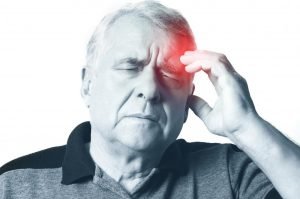Summary
Just as there is a heart attack, there is also a brain attack, commonly referred to as a stroke. Stroke is a life-threatening condition that disrupts the brain’s function, and in the Philippines, it is the second leading cause of death among the top ten fatal illnesses. Each year, almost 300,000 Filipinos face the risk of having a stroke.
A stroke typically occurs due to certain risk factors such as excessive alcohol consumption, smoking, obesity, diabetes, and hypertension. These factors contribute to the blockage or bleeding of blood vessels in the brain, reducing the oxygen supply to brain cells. Without adequate oxygen, brain cells gradually die, which can lead to irreversible damage.
While stroke is a severe condition that can be fatal if not treated swiftly, recovery is still possible with timely and appropriate medical care.
Table of Contents
Symptoms of Stroke

A stroke can be identified if a person experiences any of the following symptoms:
- Sudden numbness on one side of the body. The most well-known symptom of stroke is sudden numbness or weakness on one side of the body, often affecting the face, arm, and leg. This typically occurs on one side because only one hemisphere of the brain is usually affected by the stroke.
- Confusion and difficulty speaking. Since one side of the brain is compromised, a stroke patient may experience confusion and trouble speaking, often due to reduced control over the muscles in the mouth and tongue, making it challenging to articulate words.
- Blurred vision. A person experiencing a stroke may also have blurred vision in one or both eyes. Studies indicate that approximately 20% of stroke survivors may suffer from permanent vision impairment, highlighting the potential severity of this symptom.
- Sudden headache. Due to insufficient oxygen reaching the brain, a sudden and severe headache may occur. This is often accompanied by dizziness as the brain struggles to function under the lack of proper blood flow.
- Loss of balance and coordination. Another common sign of a stroke is difficulty maintaining balance or walking. This lack of coordination stems from damage to the brain, which hinders its ability to send appropriate signals to the affected parts of the body.
Recognizing these symptoms quickly is crucial, as prompt medical attention can significantly improve the chances of recovery and minimize potential long-term damage.
Types of Stroke
According to the American Stroke Association, there are five types of stroke or brain attacks, as follows:
- Ischemic Stroke. This is the most common type of stroke, accounting for about 87% of all cases. An ischemic stroke occurs when blood vessels in the brain become blocked by blood clots or fatty deposits, preventing oxygen-rich blood from reaching brain tissue.
- Hemorrhagic Stroke. Unlike ischemic strokes, hemorrhagic strokes are caused by bleeding in the brain. This occurs when a blood vessel ruptures, often due to high blood pressure. The resulting pressure from the bleeding can damage brain cells and increase the risk of serious, lasting complications.
- Transient Ischemic Attack (TIA). Also known as a “mini-stroke,” a TIA is a temporary blockage of blood flow in the brain, similar to an ischemic stroke but without lasting damage. Although less severe, a TIA serves as a critical warning, indicating a higher risk of a more serious stroke in the future.
- Cryptogenic Stroke. This type of stroke has no clear or identifiable cause, even after extensive diagnostic testing. In cryptogenic stroke cases, a collaborative approach involving neurologists, cardiologists, and electrophysiologists is often necessary to explore potential underlying factors.
- Brain Stem Stroke. In most strokes, only one side of the body is typically affected. However, a brain stem stroke can paralyze the entire body, often impairing both movement and speech. Damage to the brain stem, which controls many essential bodily functions, can have severe, widespread effects.
Understanding these types of strokes is essential for recognizing symptoms early, managing risk factors, and seeking prompt medical intervention, which can significantly impact recovery outcomes.
Diagnostic Procedures for Stroke
Diagnosing a stroke quickly and accurately is essential for prompt treatment and minimizing brain damage. Here are the primary diagnostic procedures used in stroke evaluation:
- Physical examination and medical history. Doctors assess the patient’s symptoms, medical history, and physical signs, such as facial drooping, arm weakness, or speech difficulties. They may perform a series of simple tests to determine if a stroke has occurred.
- Imaging tests:
- Computed Tomography (CT) Scan. A CT scan is often the first imaging test used to detect bleeding in the brain, identify the type of stroke, and determine the severity. It provides detailed cross-sectional images of the brain.
- Magnetic Resonance Imaging (MRI). MRI uses magnetic fields to produce detailed images of brain tissue and blood vessels. MRI is particularly useful for identifying ischemic stroke and areas of brain damage.
- CT Angiography (CTA) and Magnetic Resonance Angiography (MRA). CTA and MRA provide images of blood vessels in the brain and neck, helping to detect blockages or abnormalities in blood flow that may have led to the stroke.
- Blood tests. Blood tests can detect underlying conditions that may have caused the stroke, such as high blood sugar, infection, or clotting disorders. Blood tests are also used to determine the patient’s blood clotting speed, which helps in deciding treatment options.
- Electrocardiogram (ECG). Since heart conditions like atrial fibrillation can increase stroke risk, an ECG is often performed to monitor heart rhythm and detect any irregularities that may have contributed to the stroke.
- Carotid Ultrasound. This test uses sound waves to visualize the carotid arteries in the neck, where blockages or plaque buildup can restrict blood flow to the brain. It helps identify whether narrowing of the arteries is present, which can increase stroke risk.
- Cerebral Angiography. Cerebral angiography provides detailed images of the blood vessels in the brain. A catheter is inserted into a large blood vessel, and a contrast dye is injected to make blood vessels visible on X-rays. This test is particularly useful for identifying aneurysms, arteriovenous malformations (AVMs), and other vascular issues that can cause stroke.
- Echocardiogram. This test creates images of the heart using ultrasound, helping to identify sources of clots or abnormalities in heart structure or function that may lead to stroke.
These diagnostic procedures enable doctors to identify the type, location, and cause of a stroke, allowing them to determine the most effective course of treatment for the patient.
Complications of Untreated Stroke
If a stroke goes untreated, the consequences can be severe, leading to a range of physical, cognitive, and emotional complications. Here are some of the most common complications of an untreated stroke:
- Paralysis and motor dysfunction. A stroke can damage parts of the brain responsible for controlling muscle movement, leading to paralysis, typically on one side of the body. Many patients experience weakness, loss of coordination, and difficulty with basic movements like walking, grasping objects, or even sitting upright without support.
- Speech and language problems (aphasia). When a stroke impacts areas of the brain responsible for language and communication, patients may experience aphasia, which affects their ability to speak, write, or understand language. Some may only have mild difficulties, while others may lose the ability to communicate entirely.
- Cognitive decline and memory loss. Untreated strokes can impair cognitive functions such as memory, attention, and problem-solving. Patients may have difficulty with tasks requiring concentration, planning, and reasoning, and may struggle to recall recent events or information.
- Emotional and behavioral changes. Stroke can lead to significant emotional changes, including depression, anxiety, frustration, and mood swings. Some patients may also experience personality changes, becoming more impulsive or showing less emotional control due to damage to certain brain areas.
- Vision loss or impairment. Damage to the brain’s visual processing areas can result in partial or complete vision loss, typically affecting one side of the visual field. Some may also experience double vision, difficulty focusing, or a reduced ability to perceive depth.
- Chronic pain and sensory disturbances. Stroke survivors may develop pain or unusual sensations in parts of the body affected by paralysis or weakness. This can include tingling, numbness, or pain resulting from changes in brain function, sometimes leading to chronic pain conditions.
- Difficulty swallowing (dysphagia). Damage to brain areas controlling swallowing can cause dysphagia, making it hard to eat or drink without choking. Untreated dysphagia increases the risk of malnutrition, dehydration, and aspiration pneumonia, a lung infection caused by food or liquid entering the lungs.
- Increased risk of recurrent stroke. A stroke that goes untreated raises the likelihood of having another stroke, which may be more severe. Recurrent strokes can compound neurological damage, increasing the risk of permanent disability and reducing life expectancy.
- Reduced life expectancy. Severe, untreated strokes can impact basic bodily functions, such as breathing, heart rate, and blood pressure regulation. Without treatment, these complications can lead to life-threatening conditions and significantly reduce a patient’s lifespan.
Timely medical intervention for stroke is essential to prevent these complications, improve the likelihood of recovery, and enhance quality of life.
Causes of Stroke

Stroke is prevalent among many Filipinos, often resulting from unhealthy habits or pre-existing health conditions that increase stroke risk. It occurs when blood flow to the brain is disrupted, primarily through one of the following mechanisms:
- Blood vessel blockage. The most common direct cause of stroke is a blockage in the blood vessels supplying the brain. This blockage is often due to a blood clot or a buildup of fatty deposits (plaque) that restricts blood flow, leading to an ischemic stroke.
- Bleeding in the brain. Hemorrhagic stroke occurs when a blood vessel in the brain ruptures, causing bleeding within or around the brain. This sudden bleeding puts pressure on brain tissue, damaging cells and interrupting blood flow.
- Temporary blood flow interruption. A Transient Ischemic Attack (TIA), or mini-stroke, occurs when blood flow to part of the brain is temporarily reduced. Though it doesn’t cause permanent damage, a TIA serves as a warning of potential full-blown stroke.
Each of these direct causes interrupts the brain’s supply of oxygen and nutrients, leading to brain cell death and potentially severe and lasting damage.
Prevention of Stroke

To reduce the risk of stroke, it’s recommended to follow these lifestyle guidelines:
- Eat a balanced diet. Proper nutrition helps prevent high blood pressure, heart disease, obesity, and diabetes—all well-known risk factors for stroke. To reduce stroke risk, consume plenty of fruits and vegetables and limit salty foods.
- Exercise regularly. Physical activity is essential for maintaining a healthy weight and ensuring good blood circulation throughout the body, including the brain. Exercise supports healthy oxygen flow to the brain, which can help prevent stroke.
- Avoid harmful habits. Avoid excessive alcohol consumption and quit smoking. These habits can be detrimental to health, and, in excess, they increase the risk of stroke as well as other serious health conditions.
If diagnosed with stroke, it’s important not to lose hope. Numerous treatments and therapies are available, and stroke is often related to lifestyle choices. With proper self-care and a healthy lifestyle, the risk of stroke can be significantly reduced.
Risk Factors for Stroke
While anyone can experience a stroke, certain factors can significantly increase the likelihood of this condition:
- Age and gender. Although stroke can affect individuals as young as 20, the risk increases with age. Additionally, men are more frequently affected by stroke, but data shows that women have a higher mortality rate from stroke.
- Race and ethnicity. Studies indicate that African-Americans, Alaska Natives, and American Indians are at a higher risk of stroke compared to other groups. This increased risk is often linked to lifestyle factors and disparities in medical and financial support.
- Family history of stroke. If close relatives have experienced a stroke, you may also be at higher risk. In some cases, stroke risk is associated with hereditary genetic conditions that can be passed down through families.
- Substance use. High-risk behaviors, such as excessive alcohol consumption and smoking, are significant contributors to stroke. Alcohol increases the risk of brain bleeding, while smoking promotes blood vessel blockage, both of which can lead to stroke.
- Obesity and sedentary lifestyle. Being significantly overweight, especially in combination with an inactive lifestyle, raises stroke risk. Excess fat can accumulate in blood vessels, narrowing them and eventually leading to blockage and potential brain damage.
- Underlying health conditions. Several medical conditions increase stroke risk, including high blood pressure, heart disease, and diabetes. If these conditions are not effectively managed, the likelihood of stroke becomes considerably higher.
Understanding these risk factors is crucial, as managing them can help reduce the chances of stroke and improve overall health.
Stroke FAQs
Understanding stroke is crucial for prevention, early intervention, and proper treatment. Here are some frequently asked questions about stroke:
- What is a stroke?
A stroke, also known as a brain attack, occurs when blood flow to part of the brain is interrupted, depriving brain cells of oxygen. This can happen due to a blocked artery (ischemic stroke) or a burst blood vessel (hemorrhagic stroke), leading to brain cell damage and potential loss of function. - What are the warning signs of a stroke?
Common warning signs include sudden numbness or weakness in the face, arm, or leg (especially on one side of the body), confusion, difficulty speaking or understanding speech, blurred vision, dizziness, loss of balance, and sudden severe headache. The FAST method—Face drooping, Arm weakness, Speech difficulty, and Time to call emergency services—helps people recognize stroke symptoms quickly. - Who is at risk for stroke?
Stroke risk increases with age, but it can affect anyone. Factors like high blood pressure, smoking, excessive alcohol consumption, obesity, diabetes, heart disease, and a family history of stroke can increase risk. However, healthy lifestyle changes and managing medical conditions can reduce the risk of stroke. - What are the different types of stroke?
The main types of stroke are ischemic stroke (caused by blood clots or plaque blockages), hemorrhagic stroke (caused by bleeding in the brain), and transient ischemic attack (TIA), also known as a mini-stroke, where symptoms are temporary but signal a higher risk of a future stroke. - What should I do if I suspect someone is having a stroke?
Call emergency services immediately. Quick medical intervention can limit brain damage and improve the chances of recovery. Note the time symptoms began, as it helps medical providers determine treatment options. - Can a stroke be prevented?
While not all strokes can be prevented, many can be avoided by managing risk factors. This includes maintaining a healthy diet, exercising regularly, avoiding smoking, limiting alcohol intake, and managing conditions like high blood pressure, diabetes, and heart disease. - How is a stroke diagnosed?
Stroke diagnosis typically involves a physical examination, blood tests, and brain imaging like a CT scan or MRI to identify the type and location of the stroke. Additional tests, such as an ECG or carotid ultrasound, may be used to identify underlying causes. - What are the treatment options for stroke?
Treatment depends on the type of stroke. For ischemic stroke, clot-dissolving medications or procedures to remove blockages are common. Hemorrhagic strokes may require surgery to repair blood vessels. Rehabilitation therapies (physical, occupational, and speech) are essential for recovery. - What complications can arise after a stroke?
Stroke complications can include paralysis, difficulty speaking, memory loss, vision problems, and emotional changes like depression. Early treatment and rehabilitation can help minimize these effects and improve quality of life. - Can you fully recover from a stroke?
Recovery varies depending on the severity and type of stroke. Some individuals may regain full function, while others may have lasting effects. Rehabilitation therapies, lifestyle adjustments, and ongoing medical care significantly aid recovery and enhance quality of life.
Being informed about stroke can help with early detection and prevention, which are vital in minimizing its impact.


